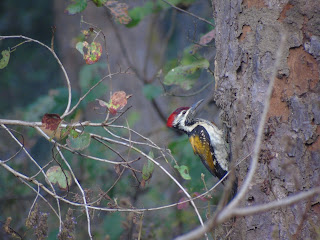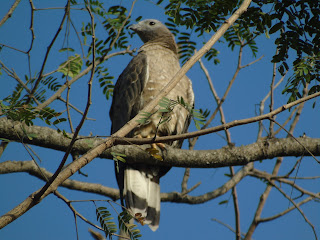Though a tiger heaven Kanha National Park is an excellent destination for bird watching with more than two hundred species recorded so far. New bird discoveries is a constant happening. The hotspot is rich in forest species though wetland and shore birds can also be checklisted during the winters.
Some of key resident species are the Malabar Pied Hornbill, Paradise Flycatcher, Indian Pitta, Black Naped Monarch, Shama, Brown Hawk Owl, Brown Wood Owl, Mottled Wood Owl, Serpent Eagle, Hawk Eagle, Honey Buzzard, White Eyed Buzzard, Booted Eagle, Grey Headed Fish Eagle, Jerdon's Baza, Crested Goshawk, Shikra, White Rumped Needletail, Bar Winged Flycatcher Shrike, White Cheecked Orange Headed Thrush, Tickell's Thrush, Pygmy Cotton Teal, Lesser Whistling Teal, and many many more......
Among the winter visitors are the Black Redstart,Tickell's Leaf Warbler, Hume's Warbler, Sulphur Bellied Warbler, Greenish Warbler, Grey Buschat, Siberian Rubythroat, Palas Fish Eagle(Rare), Rufus Bellied Eagle,Verditor Flycatcher, Green Sandpiper, Nortern Pintail, Gray Lag Geese, Bar Headed Goose, Common Teal, Richard's Pipit and more....
Here are some bird pictures from Kanha
==============================================
 |
| Scarlet Minivet |
 |
| Isabelline Shrike |

































No comments:
Post a Comment